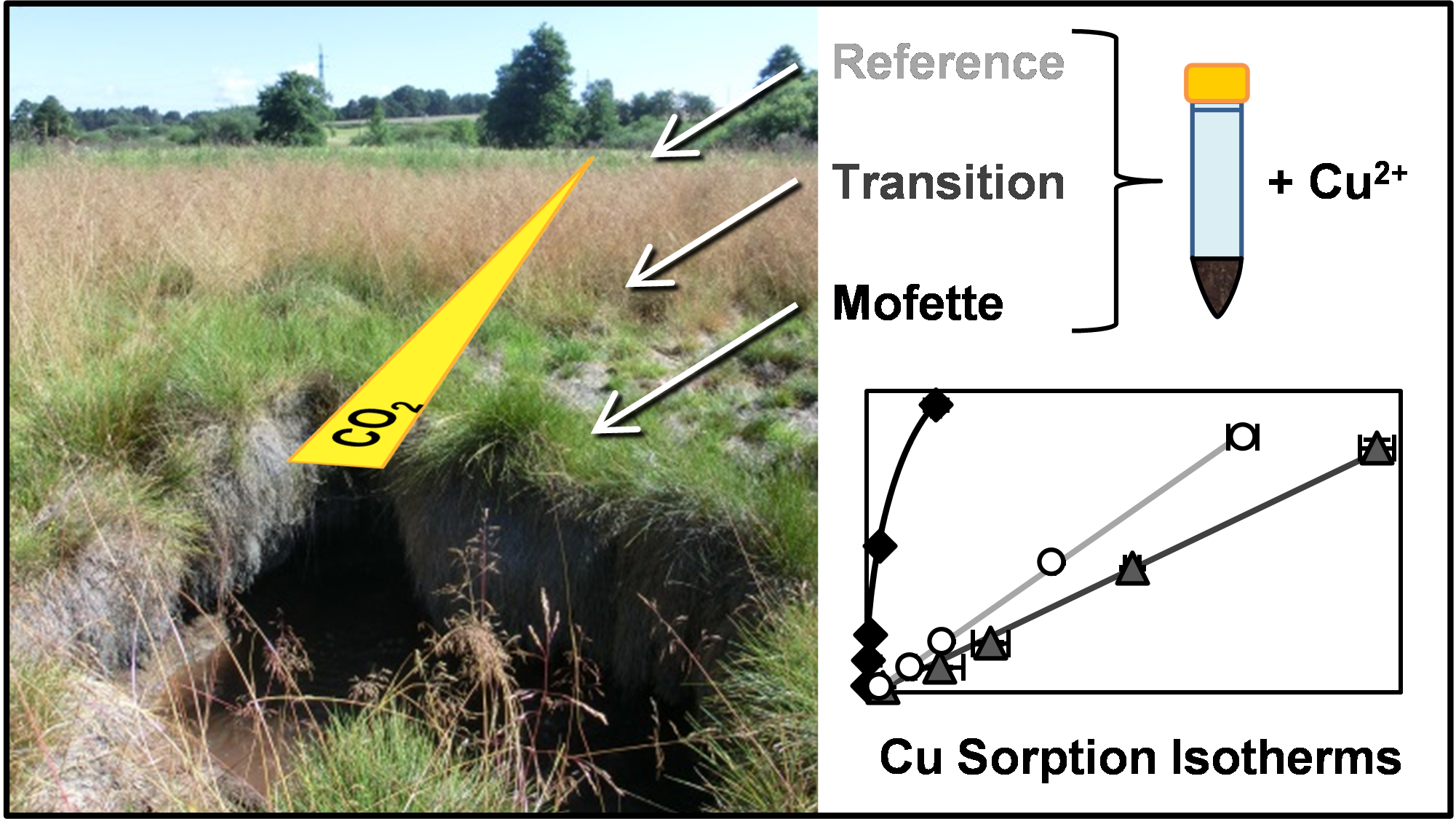New paper from Judith (PhD thesis, paper No.2)

17.09.2018
As part of her PhD thesis, Judith Mehlhorn published a new paper on "Copper mobilization and immobilization along an organic matter and redox gradient – insights from a mofette site" in Environmental Science and Technology
Mehlhorn, J; Besold, J; Lezama, J; Gustafsson, JP; Kretzschmar, R; Planer-Friedrich, B: Copper mobilization and immobilization along an organic matter and redox gradient – insights from a mofette site, Environmental Science and Technology (2018), doi:10.1021/acs.est.8b02668
Abstract: Mofettes (natural geogenic CO2 exhalations) represent excellent sites to study the behavior of Cu in soils and the co-occurrence of different mobilization and immobilization processes since they exhibit both a gradient in redox conditions (oxic to permanently anoxic) and in soil organic matter (SOM; low to high contents). Soil and pore water samples from an 18 m-transect over a mofette showed a complex behavior of Cu, with highest mobility in the transition between oxic and anoxic conditions. Cu(II) sorption experiments on SOM-rich topsoil revealed that Cu mobility under oxic conditions was confined by adsorption to SOM while in the oxygen-free mofette center reduction and precipitation of sulfides was the dominating Cu-sequestering process. In transition areas with low amounts of oxygen (<10%), there was no mineral precipitation, instead high DOC:SOC ratios strongly increased Cu mobility. Our results show that low stability of SOM formed under oxygen-limited conditions leads to increased Cu mobility unless sulfur-reducing conditions cause Cu sequestration by sulfide precipitation. The interplay of these (im)mobilization processes and especially the unexpectedly high mobility under suboxic conditions have to be considered when assessing Cu mobility along spatial or temporal redox gradients, e.g. at contamination sites or periodically flooded soils.

